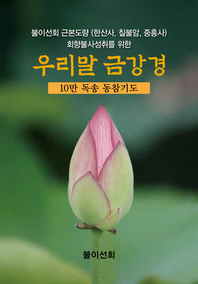상세정보
우리말 금강경, 불이선회 근본도량 (한산사, 칠불암, 중흥사) 회향불사 성취를 위한 10만 독송 동참기도(체
- 저자
- 불이선회
- 출판사
- 인터북스
- 출판일
- 2021-02-19
- 등록일
- 2022-09-05
- 파일포맷
- EPUB
- 파일크기
- 1MB
- 공급사
- 교보문고
- 지원기기
-
PC
PHONE
TABLET
프로그램 수동설치
뷰어프로그램 설치 안내
책소개
Sub-one Fertility-A Dark Cloud with Silver Linings
Korea is now experiencing sub-one fertility, with a total fertility rate of only 0.98 birth per woman. Low fertility leads to population decline and population aging, and if sub-one fertility persists population decline will be very rapid and population aging quite severe. This is a matter of great concern, and many experts in Korea are working to understand why fertility is so low and what policies should be pursued that would support women who currently bear responsibility for reproduction and to a considerable degree child rearing.
Although the demographic situation in Korea is an important long-run problem, the purpose of this brief introduction is to point out ways in which population decline and aging are positive developments and to discuss some of the ways that responses to the demographic situation in Korea can be improved. Our purpose is to highlight the broad range of issues that are relevant, while acknowledging that evidenceon some topics is incomplete and some issues are controversial.
Nonetheless, it is critical that discussions of low fertility, population decline, and population aging consider the broad range of relevant issues. With this goal in mind, we offer four favorable effects and four ways that the response to aging can be improved.
저자소개
저자 : Heung-Seek Cho
Editor
Heung-Seek Cho is the President of the Korea Institute for Health and Social Affairs(KIHASA), Sejong, Korea.
Researchers
Andrew Mason is professor of the East-West Center, Honolulu, HI, USA.
Sang-Hyop Lee is professor at the Department of Economics of the University of Hawaii at Manoa, U.S.A.
Choel-Kon Park is professor at the Department of Economics of the University of Hawaii at Manoa, U.S.A.
Naohiro Ogawa is professor of the University of Tokyo and the University of Malaya.
Joze Sambt is professor of the School of Economics of the University of Ljubljana.
Tanja Isteni?is professor of the School of Economics of the University of Ljubljana.
Gretchen Donehower is professor of the UC Berkeley, and a member of the Counting Women’s Work research project and National Transfer Accounts research network.
G. Abio is professor at the Departament d’Economia of the University of Barcelona.
G. Michailidis is professor at the Departament d’Economia of the University of Barcelona.
C. Patxot is professor at the Departament d’Economia Aplicada of the Universitat Aut?noma de Barcelona.
G. Souto is professor at the Departament d’Economia Aplicada of the Universitat Aut?noma de Barcelona.
목차
Ⅰ | Introduction : Sub-one Fertility-A Dark Cloud with Silver Linings ? 7
Ⅱ | Health and Retirement : South Korea, China, and the US ? 23
Ⅲ | Japan’s “New Orange Plan” and the Changing Cognitive Abilities of the Elderly ? 61
Ⅳ | Population Ageing and Economic Activity by Age in the EU Countries ? 101
Ⅴ | Counting Women’s Work in an Aging World ? 147
Ⅵ | Political Sustainability of Public Intergenerational Transfers ? 199



